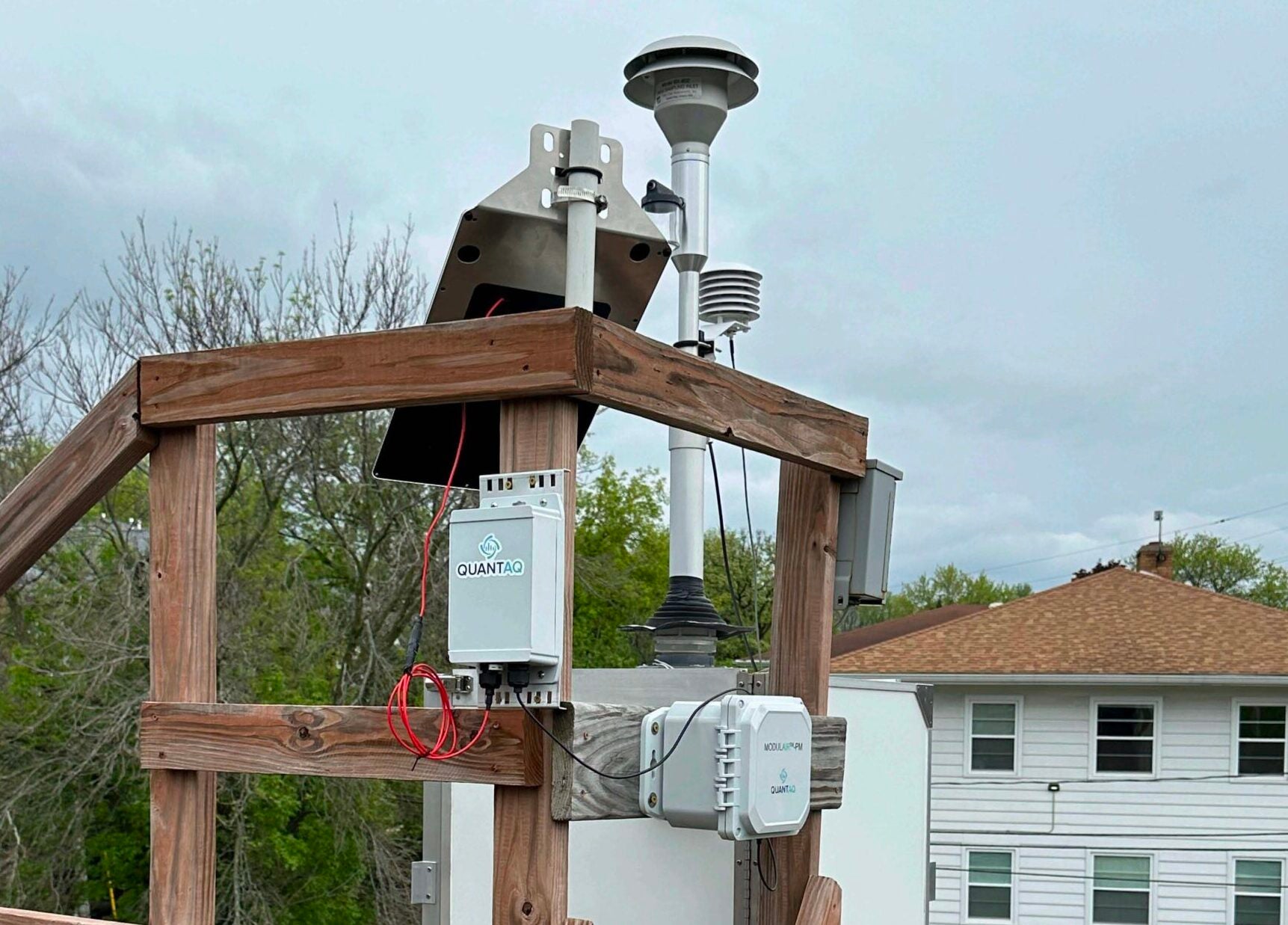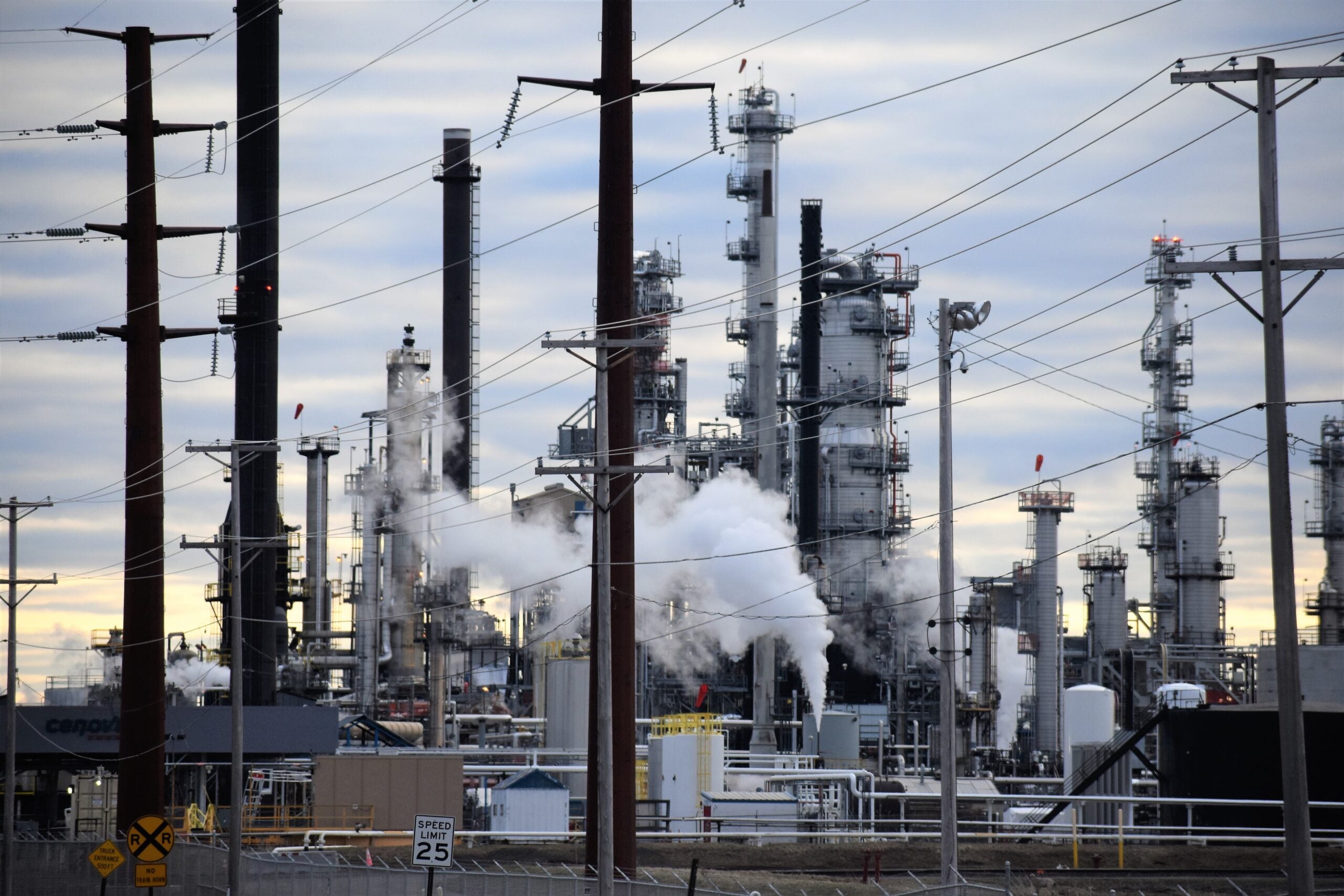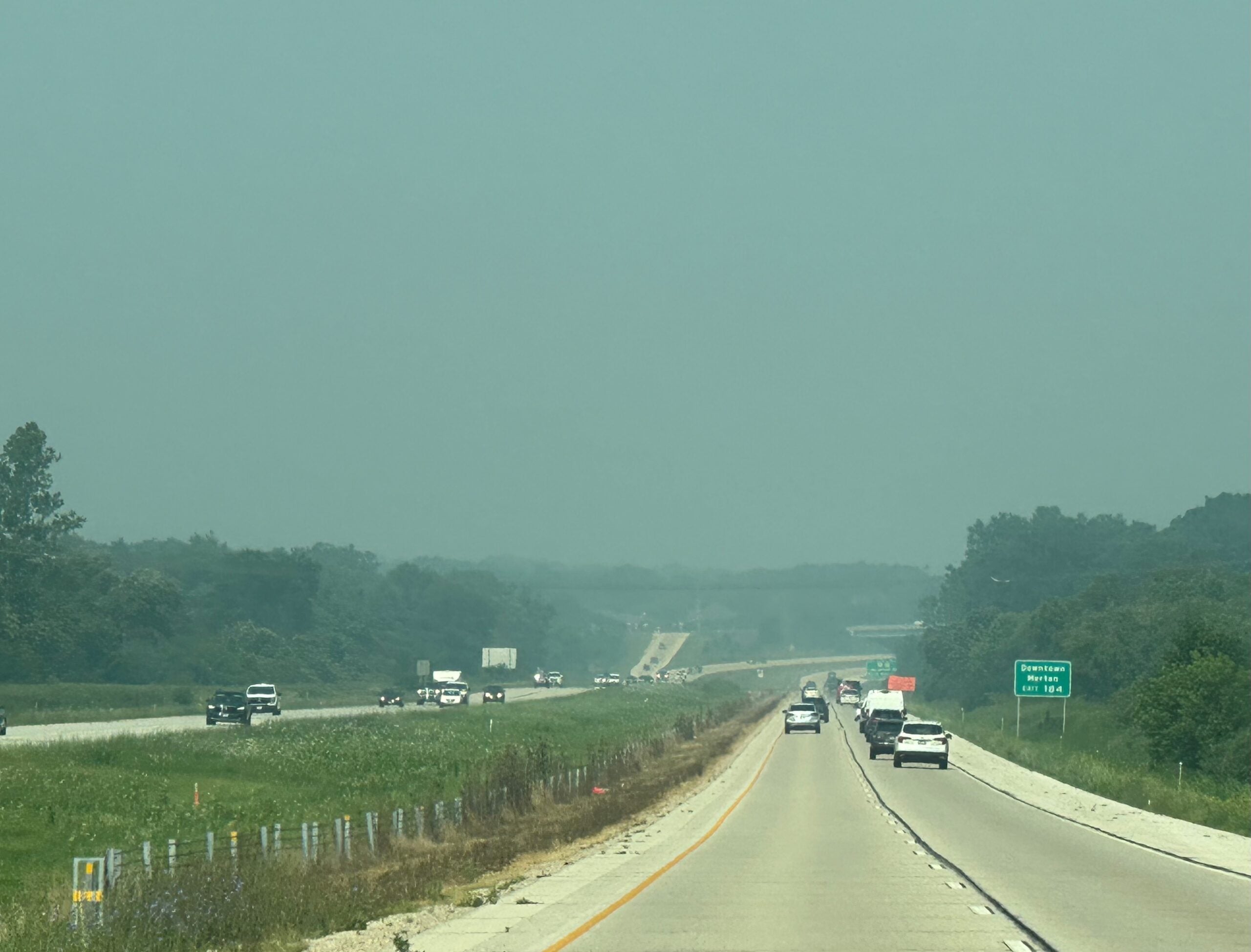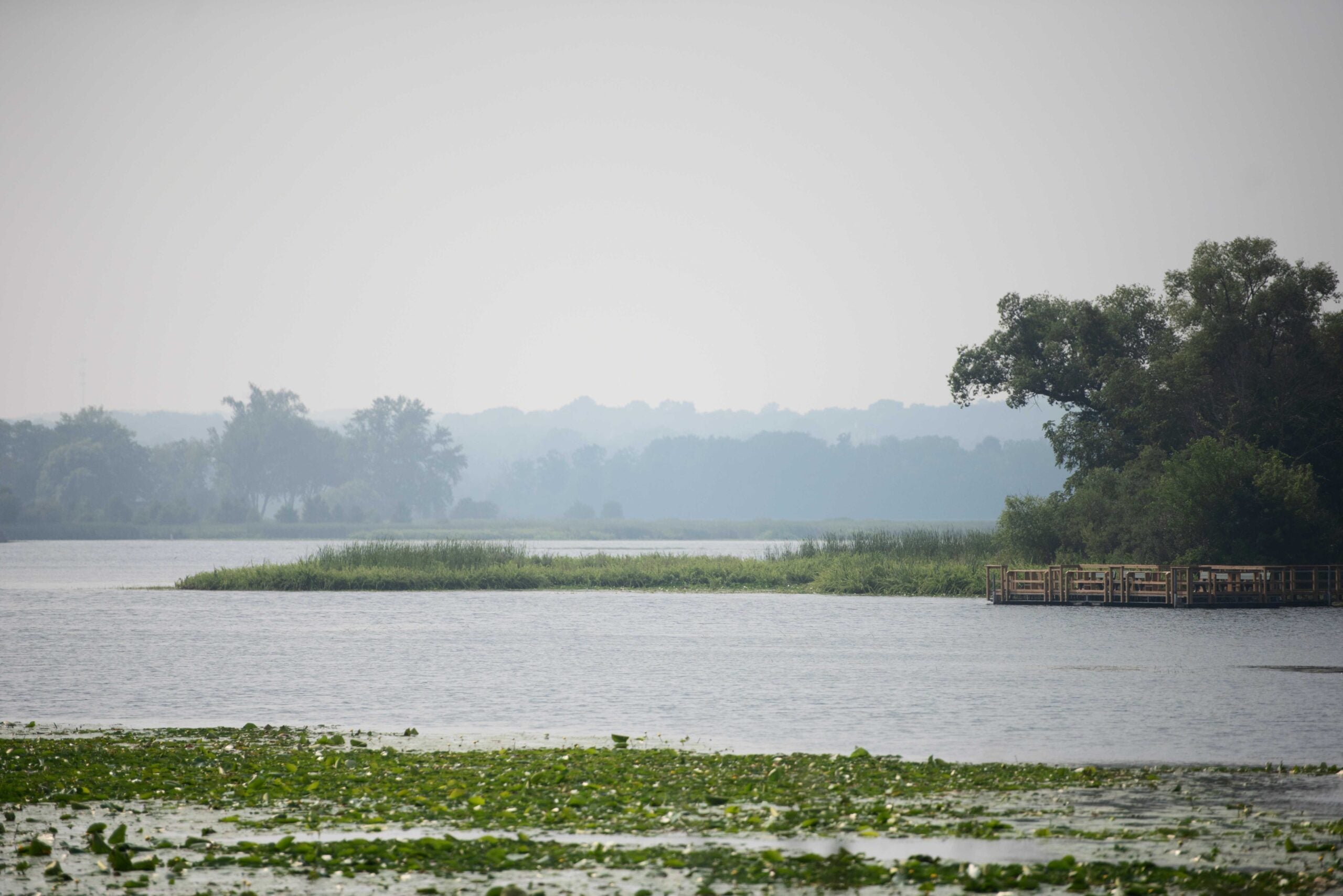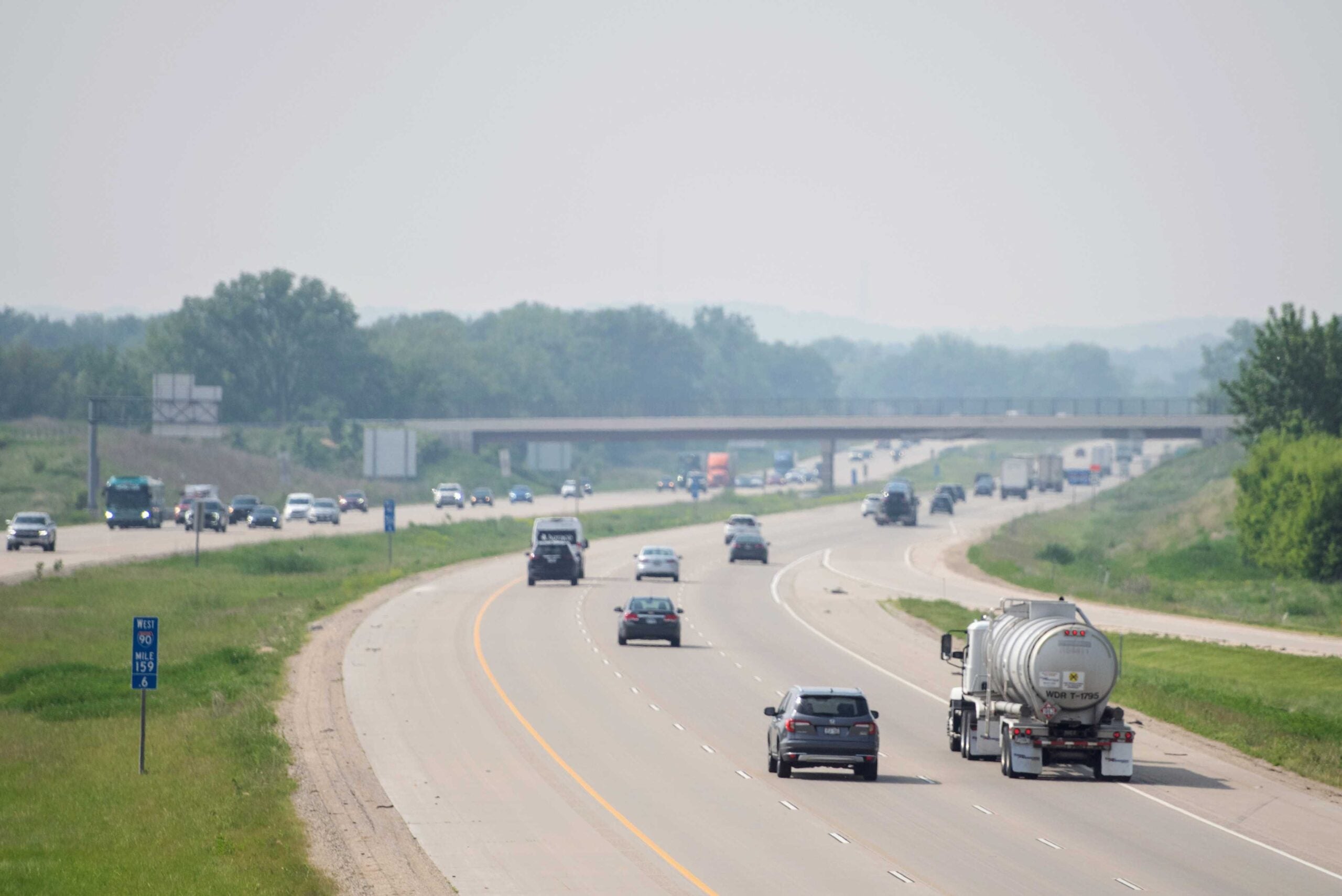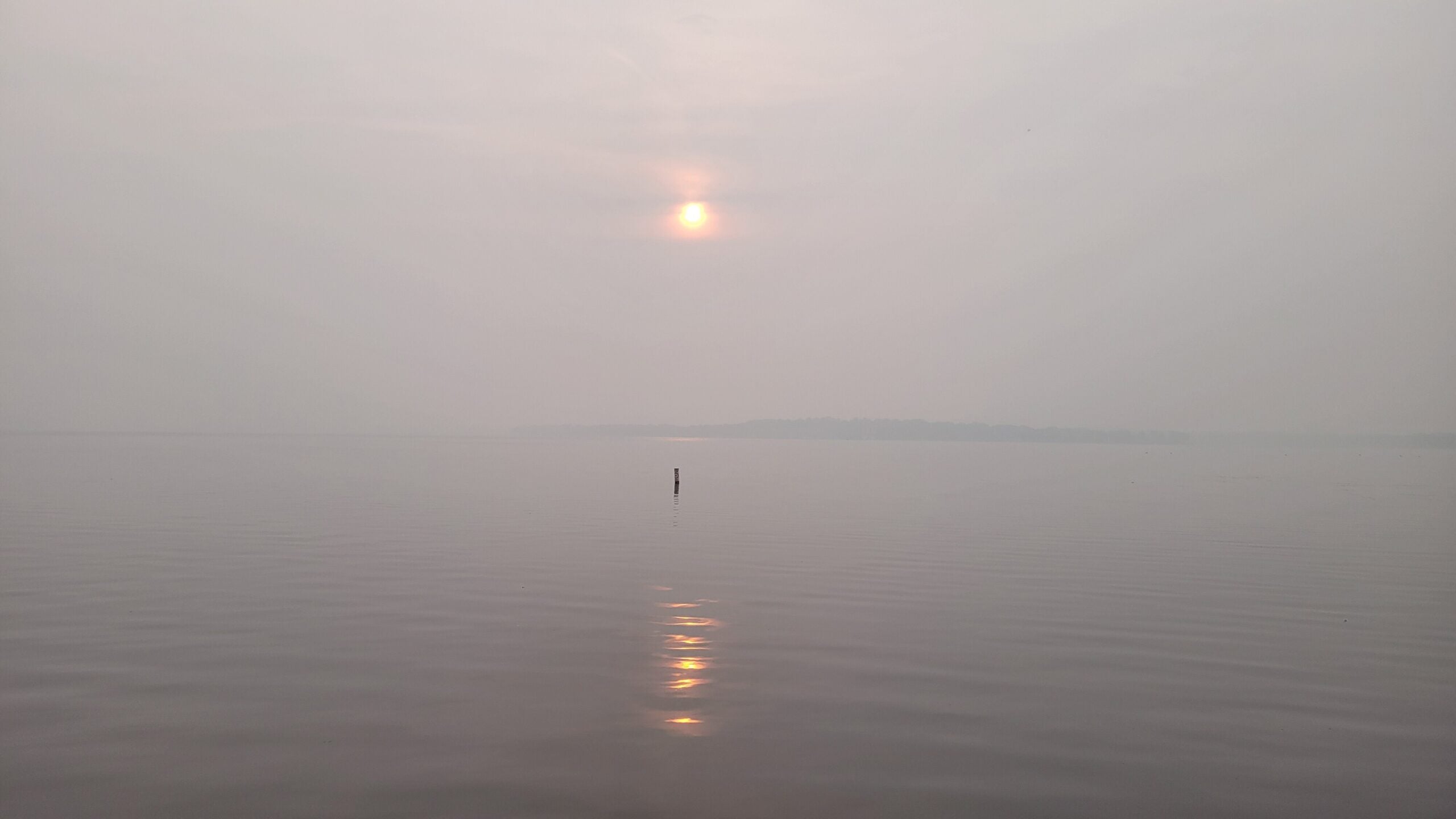Madison officials are in the process of installing dozens of air quality sensors, with the goal of tracking pollutants on a neighborhood-by-neighborhood level.
The machines will monitor particulate matter. Those tiny bits of dust, soot and other irritants can cause health problems when people breath them in.
Cars, construction sites and smokestacks are among the sources spewing particulate matter. But, increasingly, natural disasters exacerbated by climate change are playing a role, as well.
News with a little more humanity
WPR’s “Wisconsin Today” newsletter keeps you connected to the state you love without feeling overwhelmed. No paywall. No agenda. No corporate filter.
Particulate matter reached dangerous levels last summer, when smoky haze from Canadian wildfires blanketed much of Wisconsin.
“I’m sure folks remember the orange skies and not being able to go outside without it smelling like burning,” Madison Mayor Satya Rhodes-Conway said in a news conference this week.
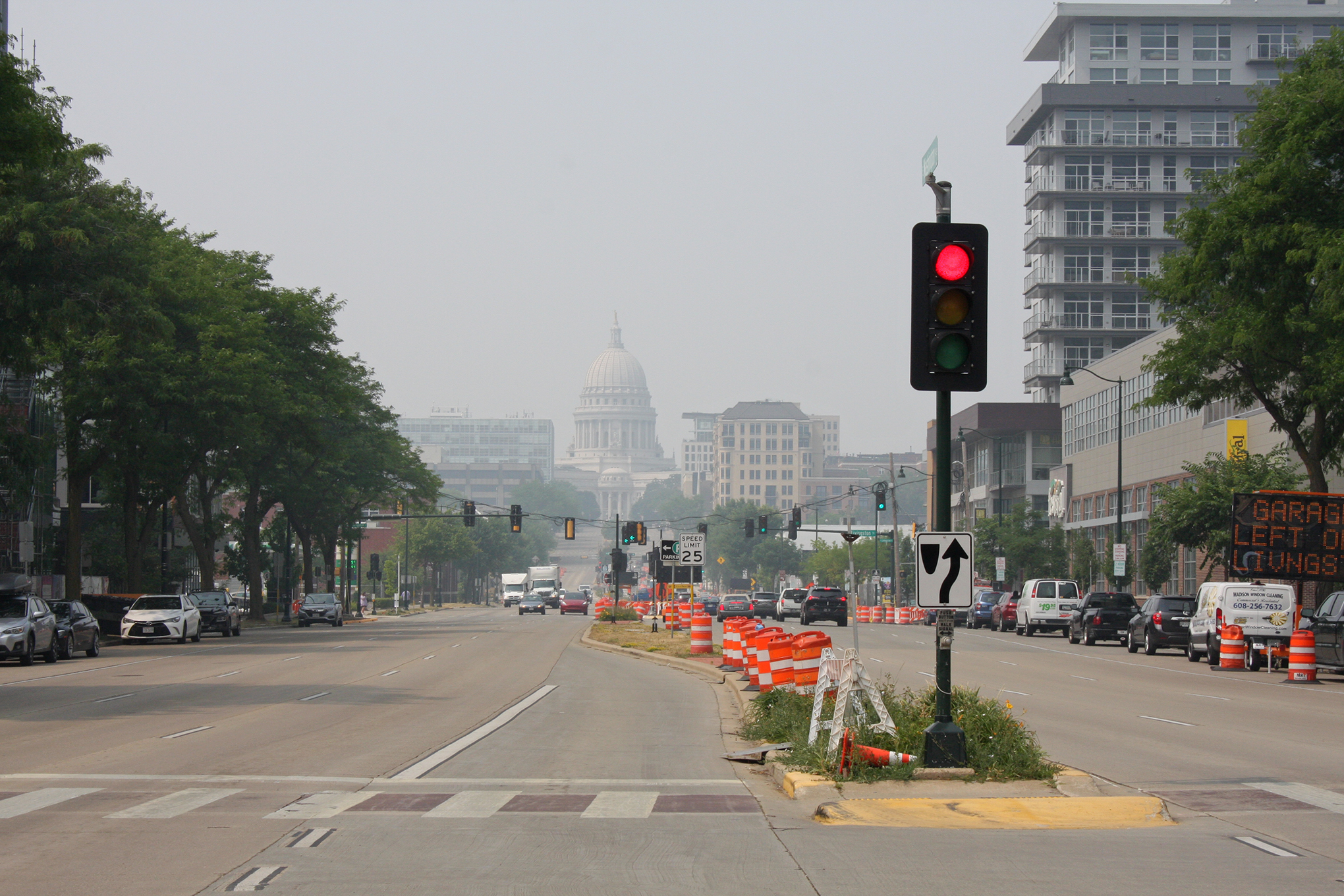
Rhodes-Conway joined other local leaders Monday to celebrate the installation of the project’s first sensor at the Kennedy Heights Community Center on Madison’s north side. Officials installed a second monitor later this week at the Eagle Heights Community Center, near the University of Wisconsin-Madison campus.
In the coming months, Madison will deploy 63 additional monitors at locations throughout the city. Each of those sensors is powered by its own solar panel.
The three-year project is being funded through a $430,000 grant from the U.S. Environmental Protection Agency.
Two other Wisconsin organizations — Children’s Hospital of Wisconsin and the state’s Department of Natural Resources — won grants for their own air quality projects through that round of funding, which came from the American Rescue Plan Act of 2021 and the Inflation Reduction Act of 2022.
Madison sensor network will complement DNR monitoring
Currently, the DNR oversees two air quality monitors within the city of Madison. The purpose of those regulatory sensors is to ensure compliance with federal air quality standards.
Compared to the new sensors being unveiled by the city, the DNR’s sensors are more accurate, and they scan for a wider array of pollutants. But the state’s sensors are also more expensive.
The hope is that, by leveraging a broader network of sensors, Madison will be able to share localized air quality data with residents, Madison Sustainability Program Coordinator Gabriel Saiz said in an interview with WPR.
“Near the Beltline (Highway), near this industrial facility, there might be a disparity in air quality,” Saiz said, giving some examples.
Madison’s new sensors will cover all of the city’s 2010 U.S. Census tracts. City officials chose those locations, which include parks and city-owned utility poles, after soliciting community input.
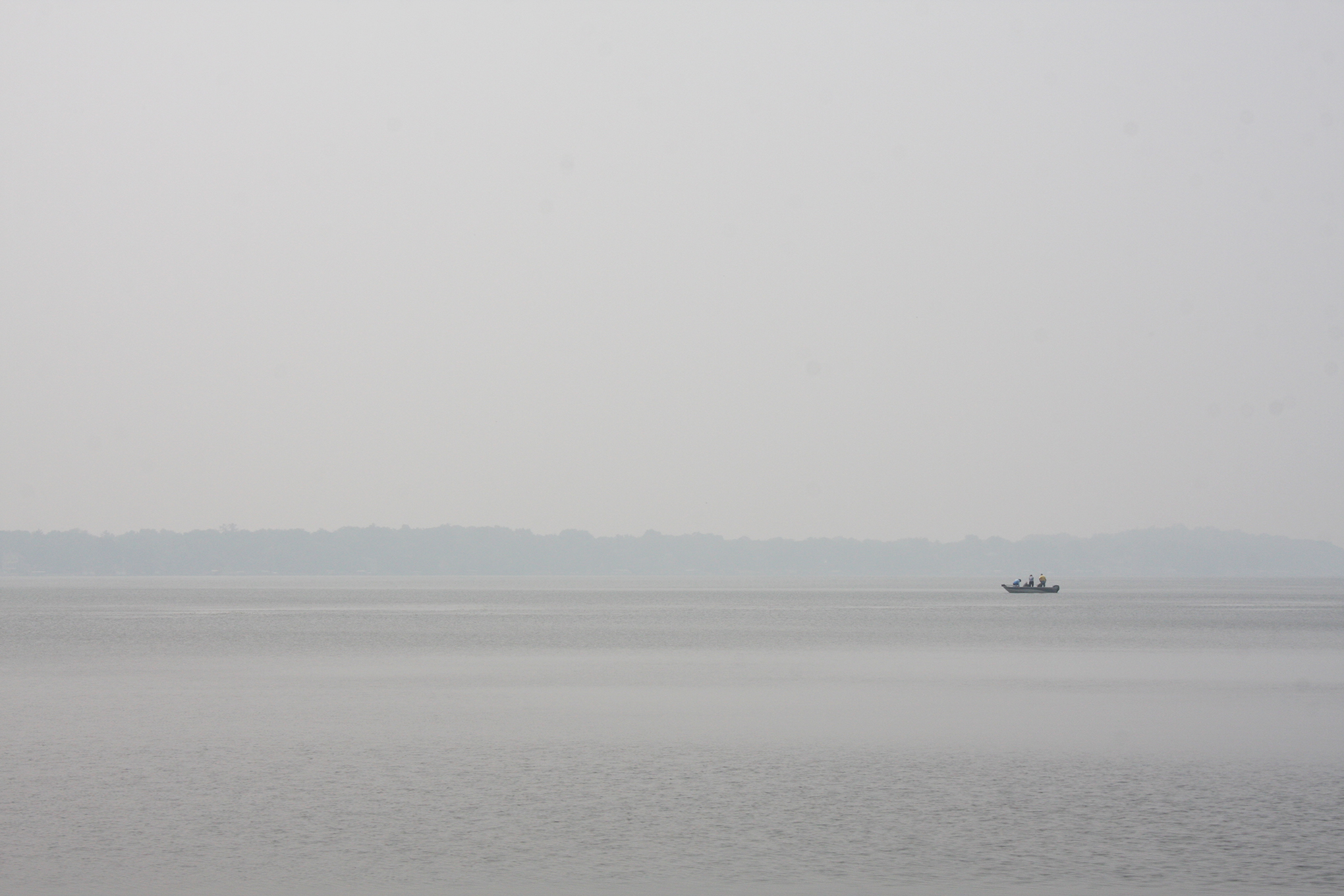
City administrators plan to compare data from Madison’s sensors and the DNR’s monitors. Once that quality-control process is complete, the city will launch a public-facing website by 2025, so Madisonians can check data from sensors near them.
On days when the sensors show abnormally high levels of pollutants, people in high-risk groups can take steps, like limiting their outdoor time or wearing an N95 mask. And Saiz hopes the information will motivate residents to think more about what they can do to combat climate change.
“These hyper-local monitors are going to make it so that our community has the agency to be able to determine their local level of exposure,” Saiz said. “And I think that there’s something so empowering about that.”
Wisconsin Public Radio, © Copyright 2025, Board of Regents of the University of Wisconsin System and Wisconsin Educational Communications Board.

